R&S®Essentials | 直流电源基础知识
常见的电源类型
作者:Anja Fenske,R&S Essentials 电源产品经理
选择直流电源时,首先需要确定哪种电源最适合您的应用。常见的直流电源有三种。电源设计不同,可实现恒定电压、低纹波和噪声或高效率等不同特性。

R&S®Essentials | 直流电源基础知识
作者:Anja Fenske,R&S Essentials 电源产品经理
选择直流电源时,首先需要确定哪种电源最适合您的应用。常见的直流电源有三种。电源设计不同,可实现恒定电压、低纹波和噪声或高效率等不同特性。
采用不同设计理念的基础电源类型:

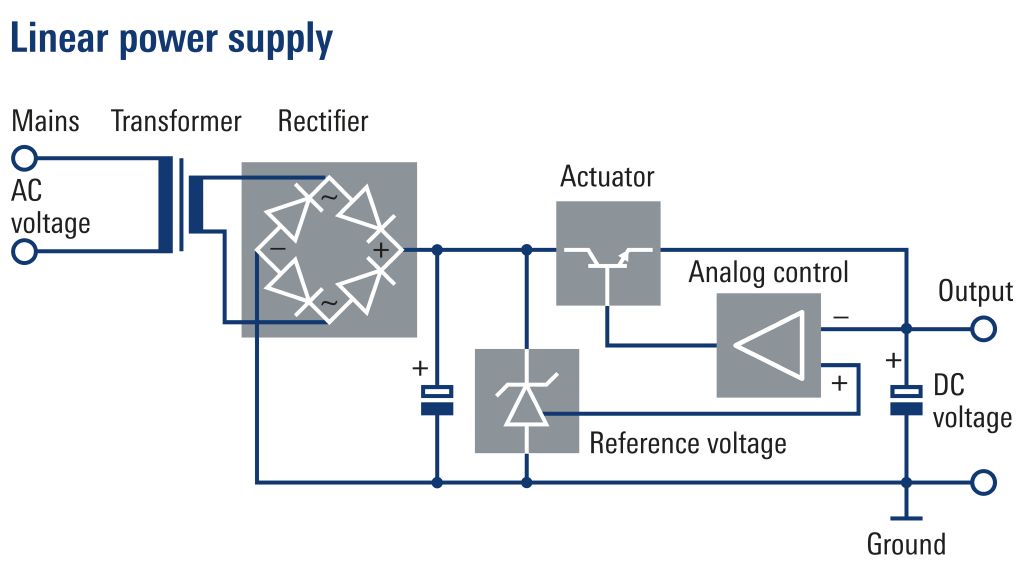
线性电源
线性稳压电源具备高度恒定的输出电压、低纹波、低噪声和快速调节特性,即使出现高线路和负载瞬态也是如此。此类电源产生的电磁干扰远少于开关电源。常规电源变压器将电源线和次级电路(输出级)隔离开来。变压器后面的整流器为串联执行器提供未调节电压。稳压电路输入和输出端的电容器用作缓冲器并减少纹波。
高精度参考电压控制模拟输出放大器。此放大器运作快捷,应对负载变化的恢复时间非常短。
R&S Essentials 线性电源:R&S®NGA100、R&S®NGL200、R&S®NGM200 和 R&S®NGU201/401。
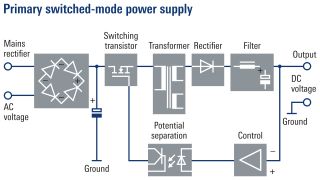
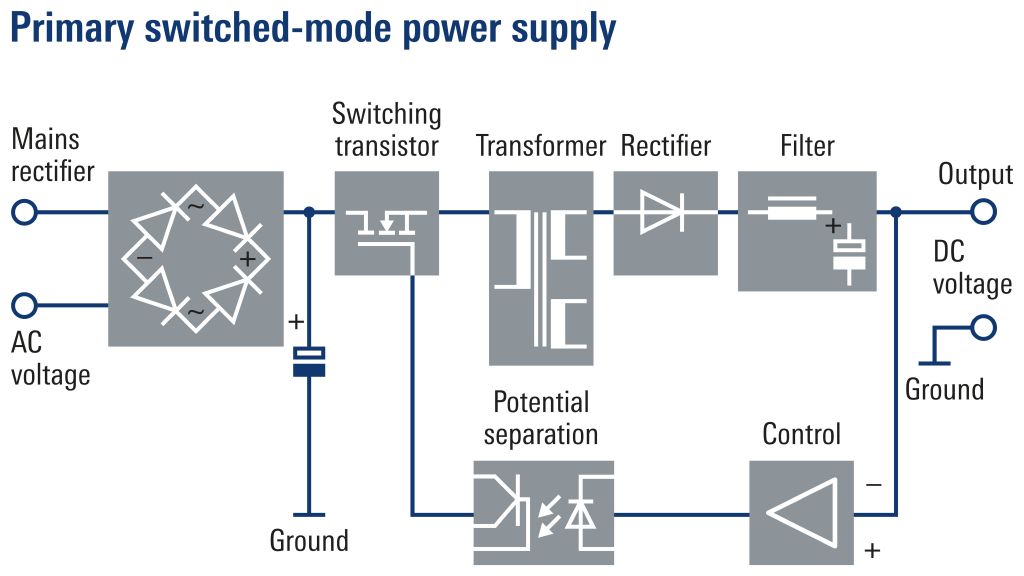
R&S®NGP800 等开关电源的效率远高于线性稳压电源。首先,线路电压会进行整流。由于输入电压较高,因此可以使用电容较小的缓冲电容器。然后,待转换的直流电压在高频下进行斩波。
直流在开关晶体管中进行斩波,只需使用相对轻巧的铁素体电感或低损耗变压器。开关晶体管完全导通和关断,因此开关损耗较低。通常会更改开关晶体管的占空比来调节输出电压。整流器和低通滤波器可提高输出质量。
混合架构电源
此类电源运用上述基础设计的不同组合。例如,R&S®NGE100B 电源在输入端使用电源变压器,然后使用整流器和开关电路调节输出电压,从而提供高效率。线性级减少输出端的无用信号分量。R&S®HMP2000/4000 电源同样采用混合架构。
如果电流流入正电压端子,电源会变成电子负载。电源不会供电,而是会吸收电能。可以用作源端和吸收端的电源能够模拟电池或负载,此类电源被称为双象限(或四象限)电源。罗德与施瓦茨提供双象限或四象限架构。电源可自动从源模式切换至吸收模式。外部应用电压超过设置的标称电压时,电流会流入电源,电流读数显示为负。
可以使用笛卡尔坐标系详细定义电源架构。四个象限显示正负电压和电流的所有组合。下图显示了一个坐标系,其中纵轴表示电压,横轴表示电流。
如上所述,标准电源通常只会生成诸如 0 V 至 20 V 的正电压(即电源在第一象限工作)。如果电源无需切换外部接线即可在输出端提供正电压或负电压,则此类电源为双极电源并在第一象限和第三象限工作,例如能够提供 –20 V 至 +20 V 的电压。此类电源可用于针对跨 0 V 的双极电压测试半导体的行为特性。
在第一象限和第三象限工作的电源通常还提供吸收功能以用于正负电压和电流。此类电源可在所有四个象限工作,并被称为源测量单元 (SMU)。在第一象限和第三象限中,电流从电压端子流出,电源处于供电模式。在第二象限和第四象限中,电流流入电压端子,电源在吸收电能。
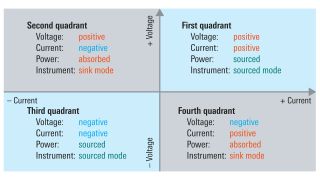
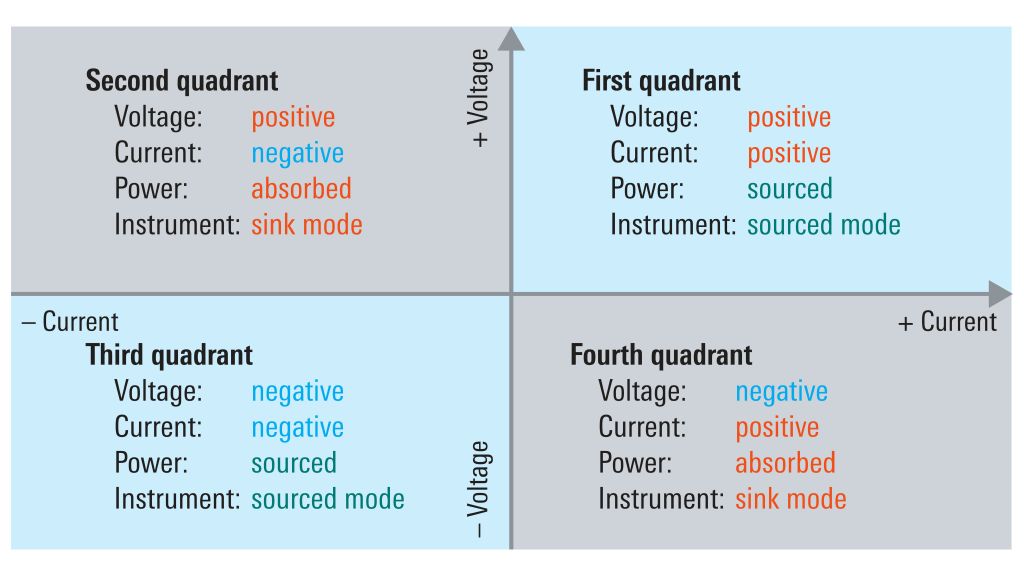
大部分罗德与施瓦茨电源的所有信道均具有相同的电压范围。因此,您可以为特定应用选择任意信道。每个信道均可用作独立电源。
复杂的高级电子电路对电源线的电压变化非常敏感。为了尽量减少为被测设备 (DUT) 供电时的干扰,电源必须提供非常稳定的输出电压和电流。理想情况下,输出端应无电压变化。实际情况下,有两种变化会影响电路或设备:周期性变化(纹波)和随机变化(噪声),二者也被称为周期和随机偏差 (PaRD)。线性电源的高频纹波远小于开关电源。
专业型电源和部分基本型电源(例如 R&S®NGA100)通过线性稳压实现非常低的残余纹波和噪声。
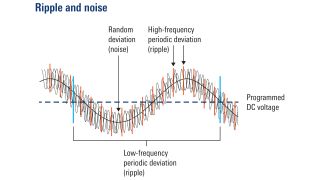
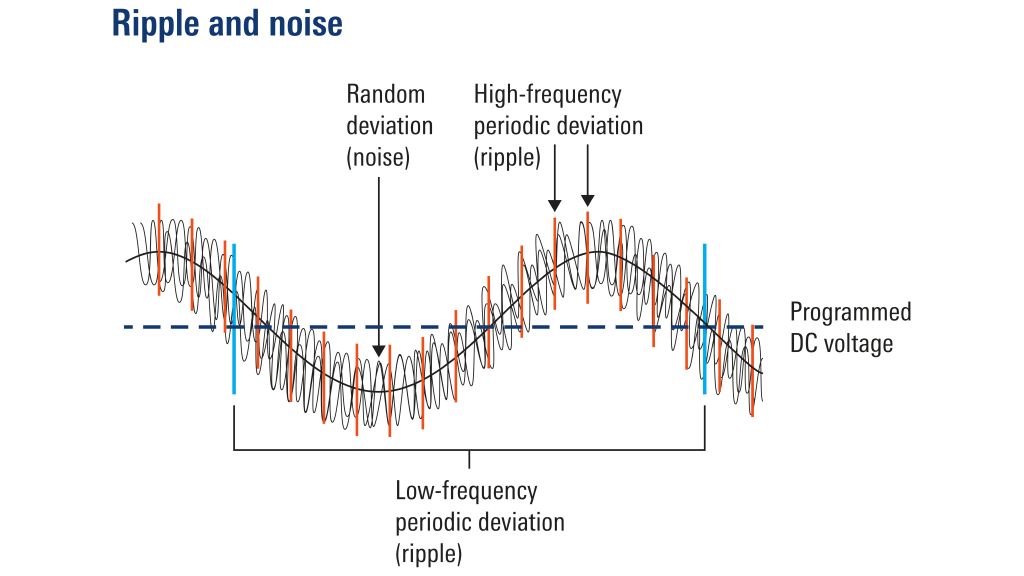
输出级采用线性设计,能够为复杂半导体等敏感设计提供低干扰电压。低纹波和噪声也非常适合开发功率放大器和 MMIC。
专业型电源的输出支持多种配置。例如,可以设置输出阻抗等参数、接通延迟和不同的触发模式。电源应尽量具备低输出阻抗以避免对被测设备的负载影响。但是,某些应用需要以可控方式模拟电池,或者模拟电池放电时内部阻抗的增加情况。R&S®NGL200、R&S®NGM200 和 R&S®NGU201 电源具备可调节输出阻抗,适用于这些应用。
总结
想了解更多信息?